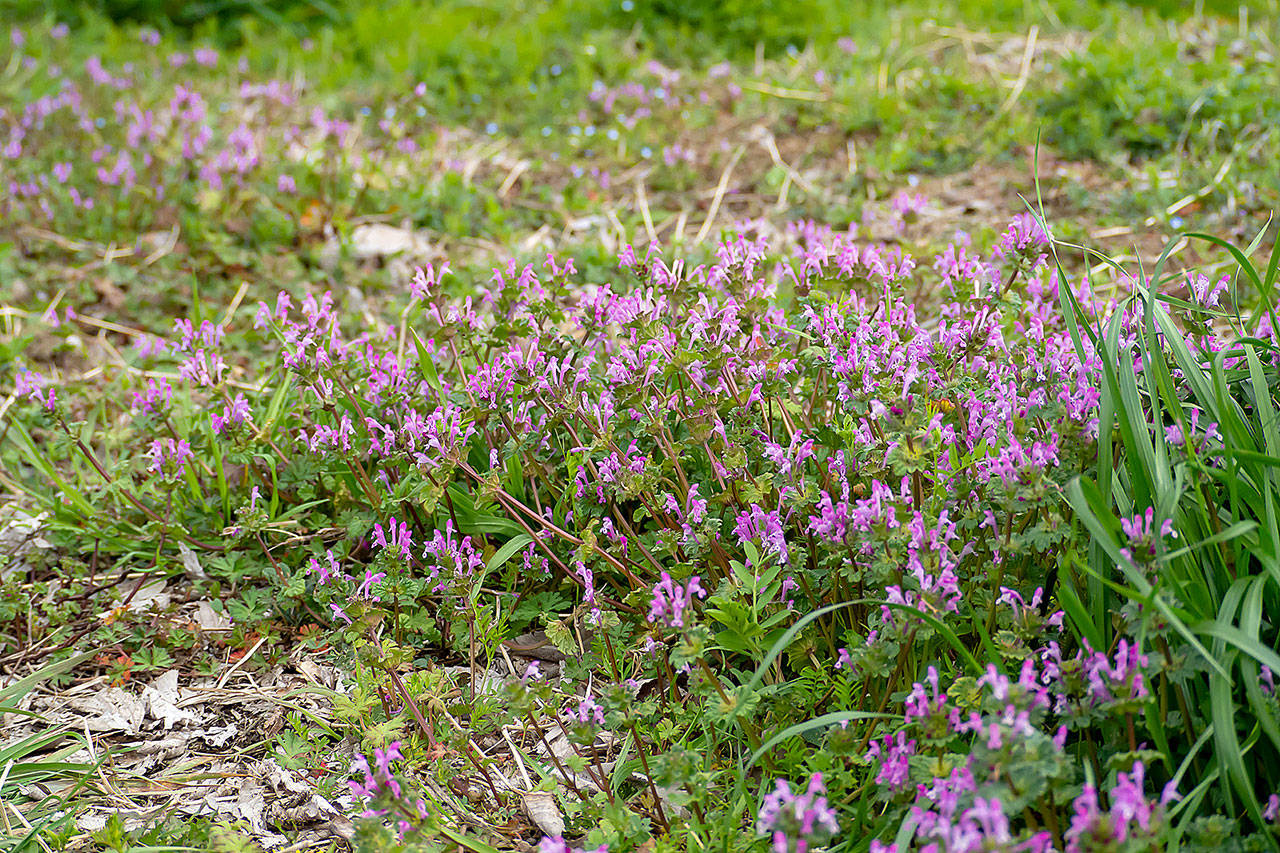This little Northwest mist we just experienced reminds me that this is the time of year when all those little weed seeds that have been lying dormant in our soils suddenly get a notice from Mother Nature that it is time to wake up and start growing.
There are three environmental signals that cause this response. Our days are getting shorter, our nights are getting cooler and, with a little moisture, fall germinating seeds are signaled to wake up.
Before any of us realize what is going on, our gardens suddenly take on a green patina of freshly sprouted seedlings of chick weed, shot weed, annual blue grass and henbit, just to name a few.
What is a gardener to do?
Fall weed control is best handled by prevention rather than trying to clean up the mess, especially if it is left until spring when weeds will seemingly grow several inches a day. We have tools called pre-emergent herbicides, which when applied before the seeds actually germinate, will stop these weeds in their tracks.
Commercial products like Casaron and Preen are two examples of pre-emergent weed preventers that when used according to label recommendations, are effective tools against fall weed invasions. Surprisingly, corn gluten can also act as a natural weed preventer (and ultimately breaks down into a source of nitrogen fertilizer).
Unfortunately, these products decrease in their efficacy the longer we wait to apply them, and I am sad to write that our window of opportunity is rapidly closing. That being said, even if you already see weeds emerging, all is not lost. Skin off the surface of the soil with a stirrup type hoe (my favorite is the Hula Hoe brand) and then apply your product of preference.
If you are opposed to using herbicides, then the next strategy (and probably the best in my book) is to cover any bare soil with an inch or more of compost. Compost, used as a mulch in this case, will smother any weed seeds in addition to acting like a sponge to absorb moisture, minimize compaction, insulate the ground, and add nutrients and microorganisms to the soil all winter long.
Everybody wins when we mulch our beds in the fall.
This fall phenomenon of seeds germinating is not all bad. It also means this is the absolute best time to plant or reseed a lawn. Now until the end of September is when we will have to best success establishing a plush and healthy turf area, and considering the brutally hot summer we just experienced, I would imagine an awful lot of gardeners have their work cut out for them.
In addition to grass seed, there are multiple types of veggies that can be sown now and actually harvested within the next 60 days. Arugula, lettuce, spinach, beets, carrots, radishes, broccoli, kale and chard are just a few of the options. Of course, you can also just pick up some transplants from the garden center, if you want to get a jump on the season.
Fall seed germination can be a mixed bag, but if we are smart, we can make the most of it. Stay safe and keep on gardening!
Steve Smith is the owner of Sunnyside Nursery in Marysville and can be reached at sunnysidenursery@msn.com.
Fall vegetables
Sunnyside Nursery’s free gardening classes are online for now. A “Growing Fall Veggies” class is scheduled for 10 a.m. Sept. 4 via Zoom. With registration, you’ll receive a Zoom link to attend the online class. For more information or to sign up, visit www.sunnysidenursery.net/classes.
Talk to us
> Give us your news tips.
> Send us a letter to the editor.
> More Herald contact information.

























